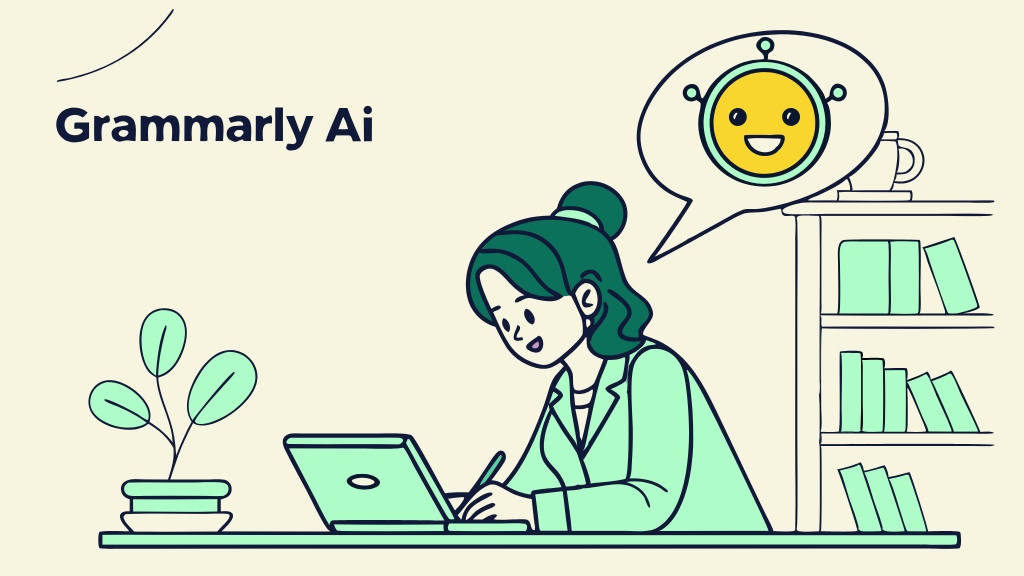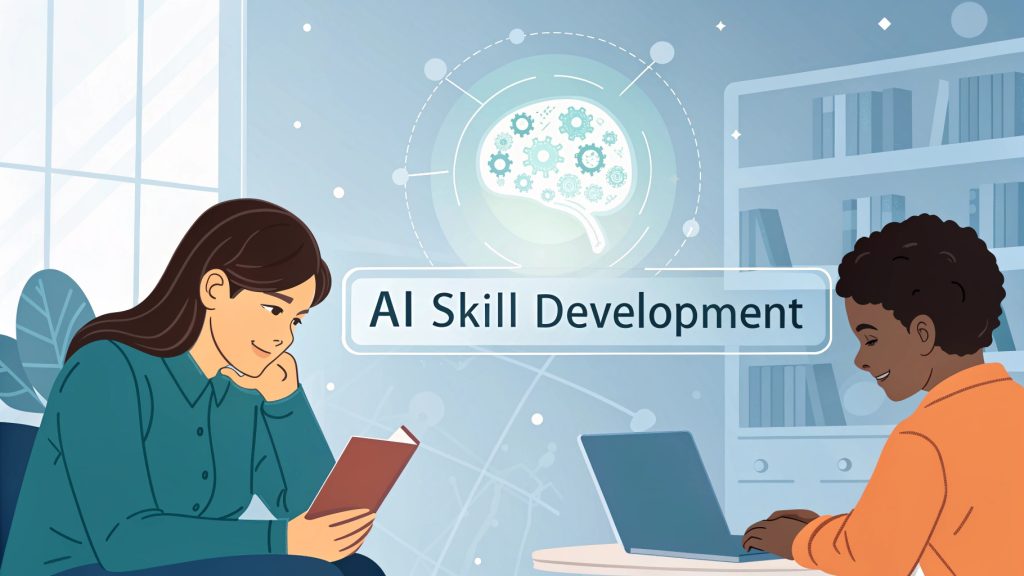
What if one simple tool could instantly make your writing stronger and more accurate? with assisted learning, grammarly is doing exactly that for teens. it’s not just about fixing typos, it’s about learning as you write. curious if grammarly is truly the best AI tool for teen learning? let’s break it down and find out.
Understanding assisted learning and AI : The role of Grammarly in teen education
Have you ever wondered how artificial intelligence can help teens become better writers? Assisted learning and AI are changing the way students improve their skills, and Grammarly is one of the leading tools in this field. Designed to act like a smart writing assistant, Grammarly uses AI to help teens spot mistakes and polish their writing. Understanding how Grammarly fits into assisted learning with AI is key to unlocking its full potential for teen learners.
Common writing challenges teens face in assisted learning and AI environments
Why do so many teens struggle with writing even with AI tools around? Common problems like grammar mistakes and tone issues still trip up learners. Understanding these challenges is key to using assisted learning and AI effectively. Keep reading to learn what teens face and how these hurdles affect their progress.
Typical grammar and spelling errors among teens
Many teens struggle with basic grammar and spelling, which can make their writing hard to understand. Common errors include mixing up “there,” “their,” and “they’re,” or forgetting to capitalize proper nouns. Even simple punctuation marks like commas and apostrophes can cause confusion. These small mistakes add up and often distract readers from the main message.
Difficulties with writing style and tone adaptation
Besides grammar, teens often find it challenging to adjust their writing style depending on the purpose. Writing a friendly email is very different from a formal essay, yet many teens use the same tone for both. Tone can affect how readers perceive the message, so mastering it is an important skill. Assisted learning tools like Grammarly aim to help teens detect and adjust tone to fit different contexts.
How Grammarly addresses common writing issues in assisted learning
Can one tool really fix all those pesky writing errors? Grammarly’s smart AI tackles grammar, spelling, and tone problems instantly, making assisted learning more effective for teens. Let’s explore how Grammarly’s features turn struggles into strengths and help young writers improve faster than ever before.
Real-time grammar and spelling correction benefits
One of Grammarly’s strongest features is its ability to catch grammar and spelling mistakes as you type. This instant feedback allows teens to learn from their errors right away, instead of waiting for a teacher’s correction. The tool highlights mistakes clearly and suggests corrections, making the learning process interactive and immediate.
Vocabulary enhancement and tone detection features
Grammarly does more than just fix errors; it also suggests better word choices to improve clarity and impact. For example, it can replace a common word like “good” with more precise alternatives like “excellent” or “effective.” Plus, Grammarly’s tone detector helps teens understand how their writing might sound to readers, whether it’s confident, friendly, or formal, enabling them to adjust accordingly.
Grammarly not only corrects grammar but teaches teens how to write better over time. As discussed in AI for teen skill development, such tools can boost both confidence and output. You’ll find even more insights on assisted learning. Want to explore more tools? See how Notion AI and Writesonic support learning too.

Comparing Grammarly with other AI tools for assisted learning
Is Grammarly truly the best AI writing tool for teens, or do others offer better options? Comparing its features and limitations with competitors reveals where Grammarly shines and where it falls short. Dive into this comparison to find out which tool fits your learning style best.
Strengths and weaknesses of Grammarly vs. competitors
| Tool | Strengths | Weaknesses |
|---|---|---|
| Grammarly | Real-time corrections, tone detection, easy to use | Limited free version, less effective for creative writing |
| Writesonic | Good for content generation, creative ideas | Less focused on grammar, more on content creation |
| Quillbot | Paraphrasing and rewriting support | Grammar checks not as comprehensive |
Practical scenarios where Grammarly excels or falls short
Grammarly shines when teens are writing essays, emails, or reports that require clear grammar and professional tone. However, it might struggle with creative writing where rules are more flexible, such as poetry or storytelling. For creative projects, other AI tools might complement Grammarly’s capabilities.
Expert tips for maximizing Grammarly’s impact on teen learning
Want to get the most out of Grammarly for assisted learning and AI? Expert tips can help teens use this tool beyond simple corrections to truly improve writing skills. Discover practical advice to make Grammarly an effective partner in your learning journey.
- Use Grammarly as a learning tool, not just a fixer: Encourage teens to read explanations for corrections to understand their mistakes.
- Set tone goals: Teach teens to choose the right tone for each writing task using Grammarly’s suggestions.
- Combine tools: Use Grammarly alongside other AI tools like Writesonic for creativity and idea generation.
- Practice regularly: The more teens write with Grammarly, the more they internalize good writing habits.
Real-life case studies : Teens improving writing skills with Grammarly
Consider Sarah, a 14-year-old student who struggled with punctuation and tone in her essays. By using Grammarly daily, she not only reduced errors but learned to adapt her style for school assignments. Her teacher noticed her writing became clearer and more engaging within weeks.
Similarly, Jake used Grammarly to draft emails and project reports. The tool’s real-time feedback helped him avoid common mistakes and communicate more confidently with teachers and classmates.
Limitations of Grammarly within assisted learning and
While Grammarly is powerful, it’s not perfect. It may miss subtle context errors or suggest corrections that don’t fit a teen’s intended meaning. Over-reliance on AI tools can also reduce critical thinking and self-editing skills if teens don’t actively engage with feedback.
“AI tools like Grammarly are best used as assistants, not replacements, in the learning process.” — Education Technology Expert
Future trends : How Grammarly and AI will shape assisted learning for teens
The future of assisted learning and AI looks bright, with tools like Grammarly expected to become even smarter. Advances in natural language understanding will allow AI to offer more personalized feedback, adapting to each teen’s unique learning style. Integration with other educational platforms could create seamless learning experiences that boost both writing skills and overall academic confidence.
Grammarly is more than a grammar checker, it’s a smart AI companion that helps teens grow as confident writers. by correcting mistakes and offering suggestions in real time, it turns every writing moment into a learning opportunity. Think it’s the best AI tool for your learning? give it a try and explore more tools transforming assisted learning in education.


